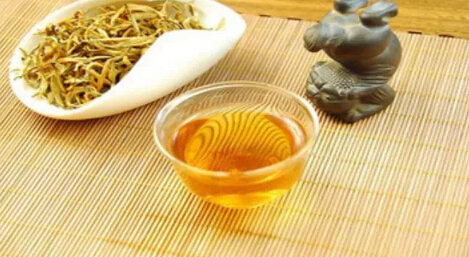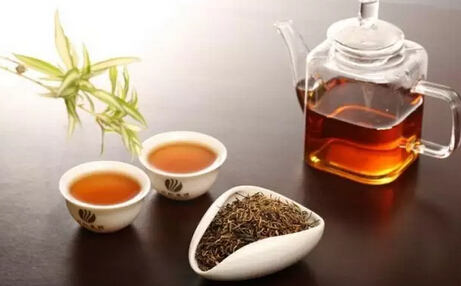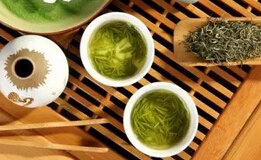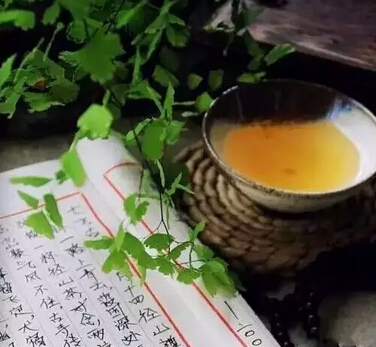
1. What is 'Sweet Aftertaste'?
The sweet aftertaste is a natural sensory effect often experienced when drinking tea and is a positive evaluation of high-quality tea flavors. This effect is primarily formed by the interplay of bitterness and sweetness, creating a specific taste profile. It begins with a mild sweetness and slight bitterness, followed by a prolonged aftertaste where the sweetness gradually surpasses the bitterness, ending on a sweet note. The sensory experience is often described as "slightly bitter at first, with a sweet aftertaste" or "bitter with a hint of sweetness initially, then the bitterness fades as the sweetness grows, with the sweet aftertaste lasting longer than the bitterness."

2. What Causes the Sweet Aftertaste in Tea?
One theory suggests that it results from the transformation of astringency. The deputy director of the Tea Science Department at Zhejiang University expressed this view in his book Tea Culture and Tea Health: "Tea contains polyphenols, which can bind with proteins to form an impermeable film in the mouth. This causes the local muscles in the mouth to contract, creating a sensation of astringency and making the tea taste bitter initially. If the polyphenol content is appropriate, the film formed is neither too thick nor too thin. After a while, the film breaks, the muscles relax, and the astringency transforms into a sweet aftertaste." Thus, he believes the sweet aftertaste is a result of the interaction between tea polyphenols and proteins.

Another theory proposes that the sweet aftertaste is an illusion caused by a "contrast effect." In their 1979 paper Interrelationships of Different Taste Qualities and Stimuli, McBurney and Bartoshuk stated: "Sweetness and bitterness are relative concepts. After tasting sweeteners like sucrose, water may taste slightly bitter, while after tasting bitter substances like caffeine and quinine, water may taste sweet." This phenomenon, known as the contrast effect, may also contribute to the perception of a sweet aftertaste.
3. Which Compounds May Contribute to the Sweet Aftertaste?
1. Tea Polyphenols and Total Sugars: Research by Xu Yongquan et al., using an electronic tongue (a system that mimics human taste perception), analyzed tea flavors. The study found a significant positive correlation between bitterness and sweet aftertaste, indicating they complement each other. Tea polyphenols and total sugar content were also positively correlated with the intensity of the sweet aftertaste, suggesting that, within certain concentrations, both compounds enhance this effect. For example, raw Pu-erh tea, which is high in polyphenols, often exhibits a pronounced sweet aftertaste, supporting this finding.

2. Flavonoids: While flavonoids have not been widely reported in the tea industry as contributors to the sweet aftertaste, they are known to produce this effect in olives. The bitterness of olives comes from unique compounds like oleuropein, flavonoids, and polyphenols, with flavonoids being particularly abundant. Bitter melon's bitterness comes from momordicin and charantin, while bitter tea's bitterness stems from glycosides and small amounts of flavonoids. Glycosides only impart bitterness, so bitter melon lacks a sweet aftertaste. Flavonoids, however, initially taste bitter but later evoke a natural sweetness. The flavonoids in olives are the main reason for their sweet aftertaste, with higher flavonoid content leading to a more pronounced effect and richer flavor. Tea contains about 3%-4% flavonoids by dry weight, but the exact mechanism behind their sweet aftertaste remains unclear.

3. Organic Acids: Organic acids in tea stimulate saliva production, creating a "refreshing and sweet" sensation. Tea contains various organic acids, accounting for about 3% of its dry weight. These acids, such as malic, citric, succinic, and oxalic acids, are mostly free organic acids. During tea processing, other organic acids may form. The content of organic acids increases during withering and fermentation, making oolong tea more likely to produce a lasting sweet aftertaste. Properly withered green tea may also exhibit this effect.

4. Polysaccharides: Tea contains polysaccharides, which are not sweet but have a viscous texture that lingers in the mouth. Saliva contains amylase, which breaks down polysaccharides into maltose, a sweet-tasting sugar. Since this enzymatic reaction takes time, the delay creates the perception of a sweet aftertaste.